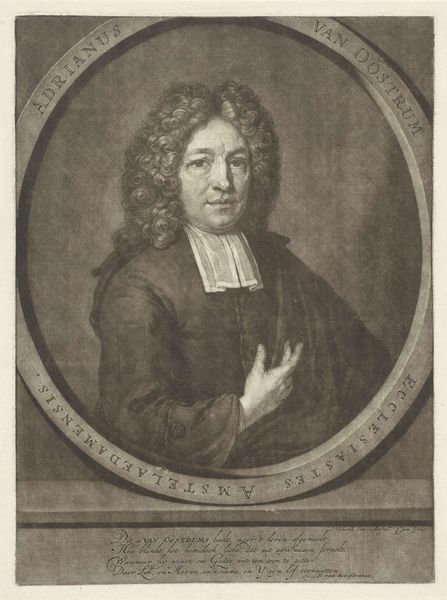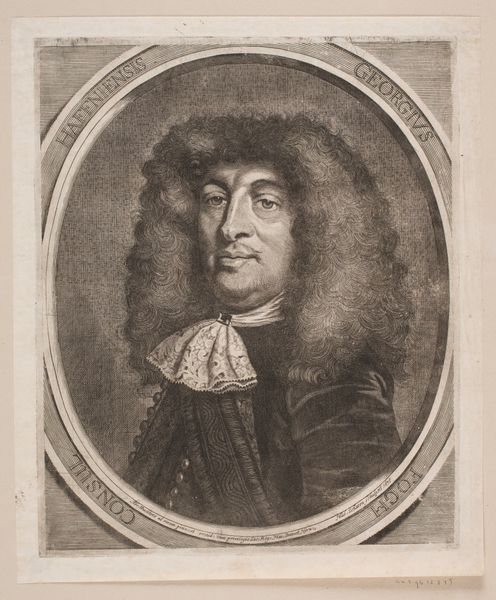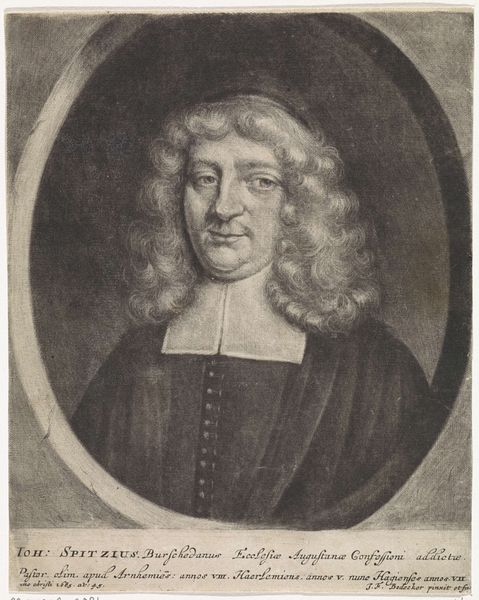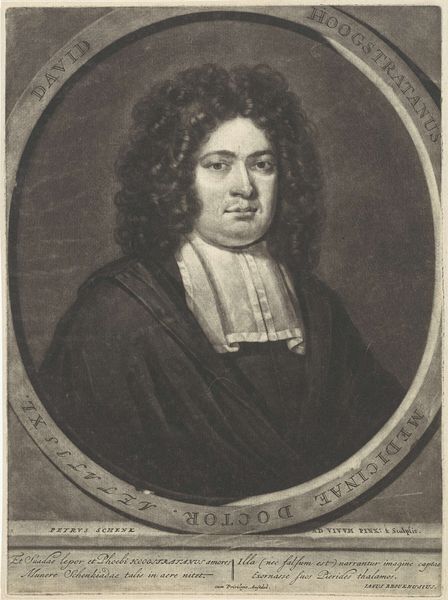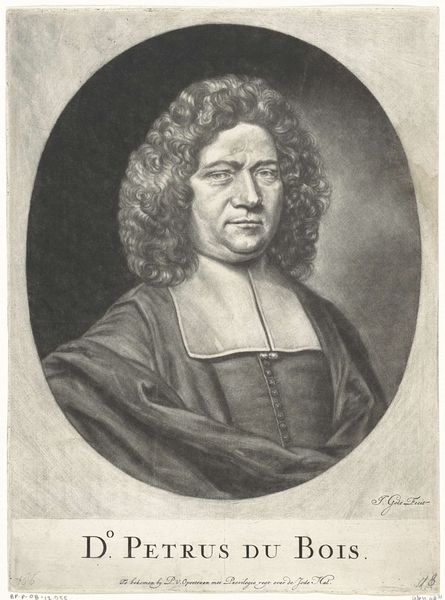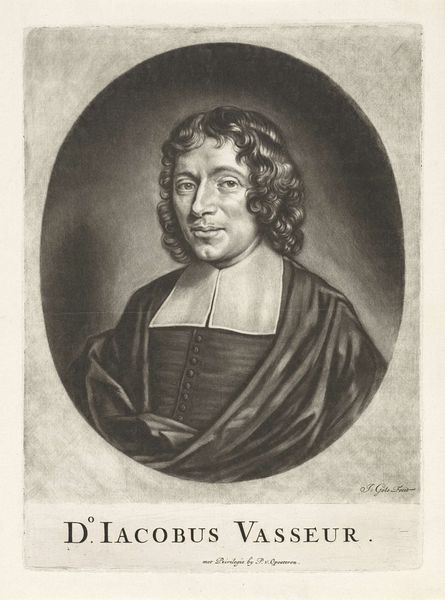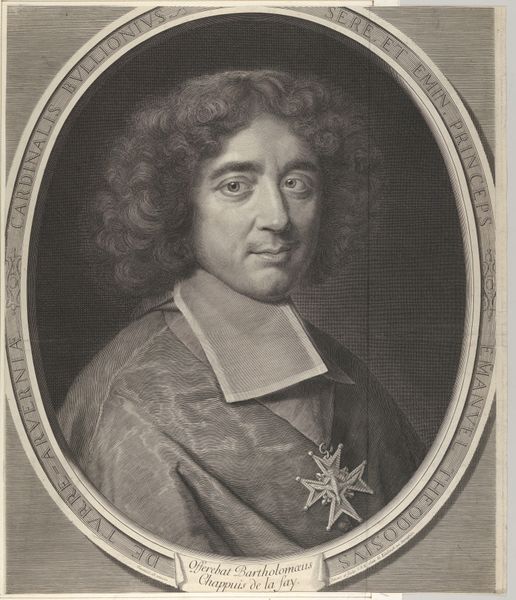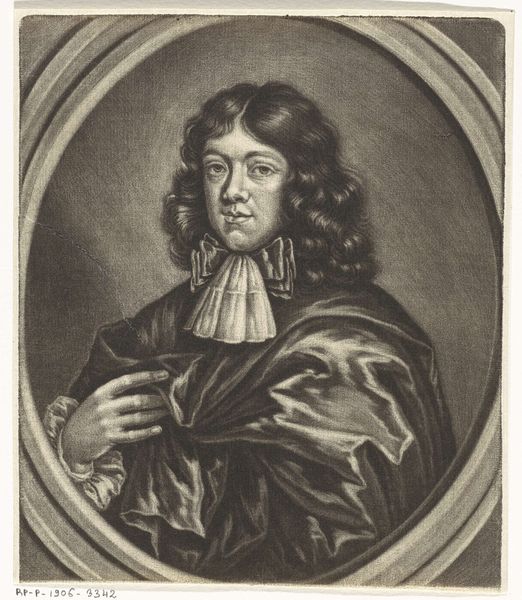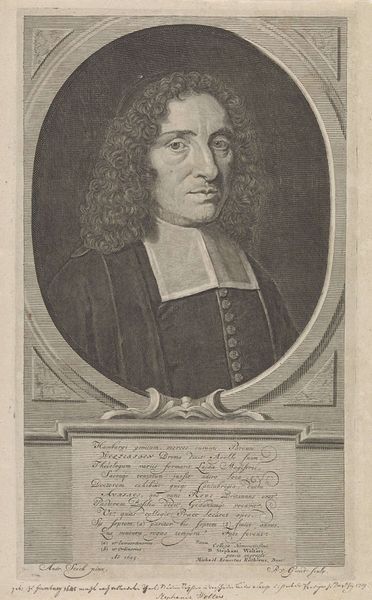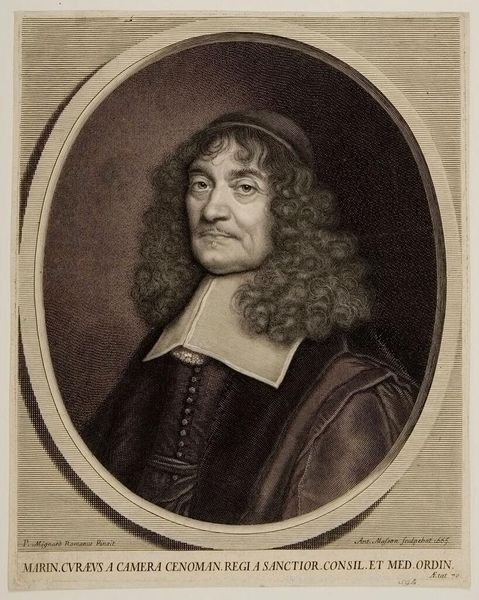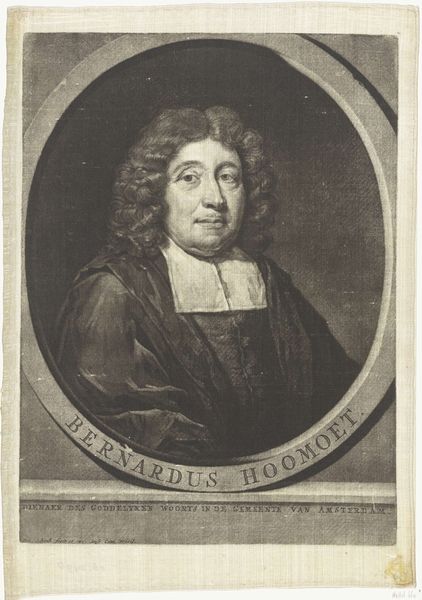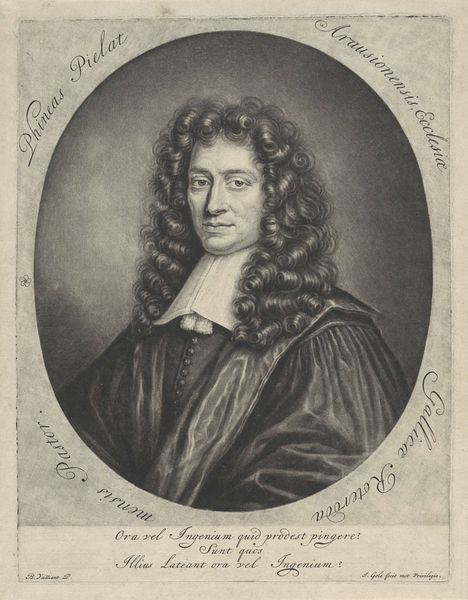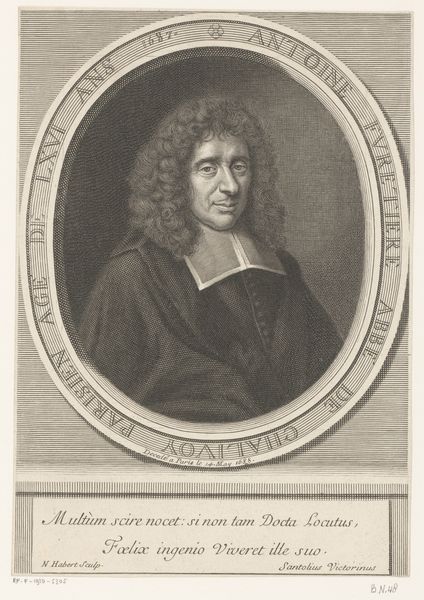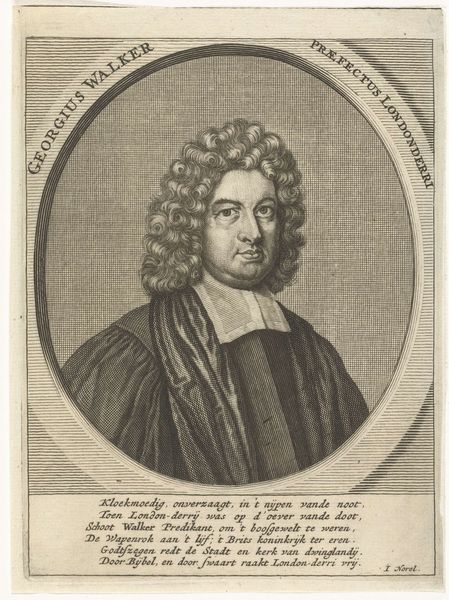
drawing, print, engraving
#
portrait
#
pencil drawn
#
drawing
#
baroque
# print
#
pencil sketch
#
charcoal drawing
#
pencil drawing
#
portrait drawing
#
engraving
Dimensions: height 288 mm, width 211 mm
Copyright: Rijks Museum: Open Domain
Editor: Here we have Jacob Gole’s “Portrait of Gilbert Burnet,” created between 1670 and 1724. It's an engraving, so a print. It has an interesting textured surface. What's your take on this portrait, particularly thinking about how it was made and what it might have represented at the time? Curator: What interests me is the material process here. It's not simply an image of Gilbert Burnet; it's an *engraved* image. Think of the labor involved. The artisan, Gole, meticulously translates Burnet’s likeness through the forceful act of carving into a metal plate. Each line is a deliberate mark, reflecting a specific decision and skill. Consider how the reproducibility of print altered access to portraiture. Editor: That's a good point, making it accessible to more people. Curator: Exactly. And it raises questions about authenticity and value. Is it "less than" a painted portrait? Or does the democratizing aspect of print, making imagery accessible, make it more important, challenging elite notions of patronage and ownership? Editor: So the very nature of its creation is making a statement about social structure. How the engraving material challenges art hierarchy itself, questioning those boundaries is really interesting! Curator: Precisely! Consider also the social function of portraiture during the Baroque period, moving away from entirely idealized depictions and using art for new levels of propaganda. We can use this object as a launching point for understanding class and labor dynamics. The means of production shapes how we perceive and value art. Editor: I never really thought about how the physical process of creating the work changes the meaning and power behind the piece. Thanks! Curator: Likewise! Exploring art through material analysis always reveals the social currents flowing beneath the surface.
Comments
No comments
Be the first to comment and join the conversation on the ultimate creative platform.
